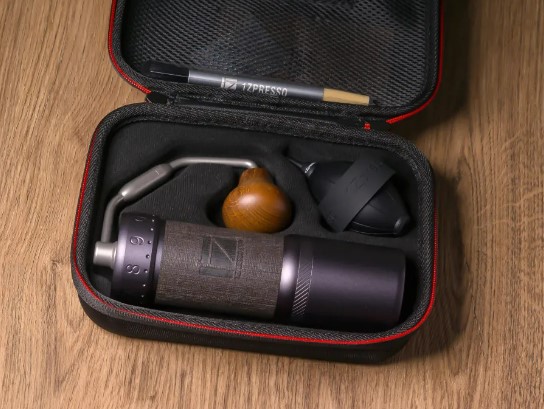Open the Secret to Newly Ground Coffee: Your Ultimate Grinder Overview
Comprehending the nuances between blade and burr grinders is just the start; a trip that dives right into grind sizes, upkeep routines, and variables that can make or damage your morning brew awaits those looking for to grasp the art of grinding coffee beans. Join us as we navigate via the detailed globe of coffee grinders, revealing the secrets that can truly boost your everyday cup of joe to a new level of quality and flavor.
Kinds Of Coffee Grinders
Featuring a variety of devices and layouts, coffee grinders been available in numerous kinds to satisfy different preferences and developing approaches. Both primary categories are blade mills and burr grinders. Blade grinders make use of a rotating blade to chop the coffee beans right into premises. While they are much more economical, they may generate irregular grind sizes as a result of irregular grinding. On the other hand, burr mills crush the beans in between a moving grinding wheel and a non-moving surface area. This results in a much more uniform work size, important for a constant extraction and balanced flavor in the last cup. Within the burr mill classification, there are flat burr grinders and conelike burr grinders. Apartment burr mills supply an even more constant work size however can sometimes get too hot the coffee premises. On the other hand, conelike burr grinders are understood for their quieter operation and less warmth production, making them a prominent selection among coffee lovers. Choose the kind of coffee mill that best fits your developing method and preference preferences to raise your coffee experience.

Burr Vs. Blade Grinders
When comparing burr and blade grinders for coffee, one need to consider the important differences in work uniformity and general developing top quality. Burr mills are understood for their capability to offer a much more consistent grind size compared to blade grinders.
On the other hand, blade grinders chop the beans using a rotating blade, which can lead to unequal fragment sizes as a result of irregular grinding. This difference in fragment dimensions can lead to over-extraction of smaller particles and under-extraction of bigger ones, influencing the general taste and top quality of the made coffee. For coffee enthusiasts seeking precision and control over their work size, spending in a burr mill is frequently thought about the remarkable option.

Factors to Consider When Choosing
Thinking about the essential duty work consistency plays in brewing quality, when choosing between burr and blade mills for coffee, there are numerous key factors to take right into account. Burr mills typically supply a vast array of work dimensions, enabling you to change for different developing techniques such as espresso, drip coffee, or French press. Size and ability are likewise crucial factors to consider, specifically if you intend to grind coffee in big quantities or need a compact grinder for limited counter space.
Grind Size for Various Brewing Methods
To accomplish ideal taste extraction, choosing the proper work dimension is critical when preparing coffee for various developing approaches (1Zpresso J-Ultra). Drip coffee makers work best with a medium grind size, allowing for a check this balanced extraction over a moderate brewing period. Comprehending the connection in between work dimension and developing technique is vital for opening the complete potential of your coffee beans and attaining a delicious, well-balanced cup of coffee every time.
Maintenance and Cleaning Tips
Guaranteeing appropriate maintenance and routine cleansing of your grinder is necessary for preserving its performance and expanding its life-span. To keep the quality of your coffee grounds and the effectiveness of your grinder, it is recommended to clean your grinder completely at the very least as soon as a month. Beginning by unplugging the grinder and dismantling it Get More Information meticulously, adhering to the maker's directions. Utilize a brush or a cloth to remove any kind of trapped coffee fragments, oils, or deposit from the burrs, hopper, and any kind of other removable components. You can likewise use a percentage of rice to help take in oils and clean hard-to-reach locations. In addition, think about making use of grinder cleansing pellets or tablet computers for a much more extensive cleansing process.
Routine upkeep also includes inspecting for any kind of signs of deterioration, such as plain burrs or loose screws, and addressing them immediately. It is crucial to keep your mill in leading condition to make sure consistent grind dimension and top quality coffee extraction. By integrating these maintenance and cleaning pointers into your routine, you can appreciate fresh and tasty coffee with every mixture.

Verdict
